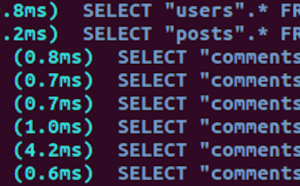Beginning a new project is always associated with some repetitive work. And this is because most of our projects, at their starting point, share one and the same minimal code base, best practices and principles. We all know that “reinventing the wheel” every single time is not only superfluous, but also a quite boring job. For that reason there are tools that can help us in resolving this problem.
Boilerplate and Bootstrap are both extremely valuable tools when we need a starting foundation for our new projects. But the question is: which one to choose and which one is better for me and my project? It seems that many people are confused and embarrassed to give an adequate answer. That’s why, in this article, I’ll try to make things clear and help you to get the right decision for you.
The most obvious answer to the above question is: use what best suits your needs. But this is quite general advice and we need something more comprehensive and explanatory. Actually, in our case, we have not only two but four possibilities: we can use Boilerplate, we can use Bootstrap, we can use both of them or neither of them. To decide which option is best for you let me give you a more detailed explanation.
1. Using Boilerplate
Boilerplate is a front-end kickstart template that contains a series of best practices and common inclusions. It offers a generic files/folders structure, HTML5-ready template and basic server-side global configurations. It’s like blueprint for your house, but without the building blocks. You have the idea what you’re going to build and you have made all preparation steps, but you don’t have the materials needed to actually build the house. You are free to include “the missing” HTML/CSS/JavaScript components from anywhere else, including from Bootstrap.
At first glance Boilerplate may seem a quite simple template, but in fact it gives you many benefits that can’t be seen immediately. Let’s check out some of them:
- HTML5-ready template plus basic structure for your files and folders
- Ready-to-use, performance optimized print styles
- Cross-browser compatibility
- Mobile browser optimizations
- Progressive enhancement and graceful degradation
- Best-practice server configurations
- Optimal caching and compression rules
- Optimized Google Analytics snippet code
- and more…
You get all these goodies by default, without need of writing a single line of code. And here is the content of the default download:
- css – a directory containing normalize.css, and main.css with Boilerplate’s defaults, common helpers, media queries, and print styles.
- doc – a directory containing all Boilerplate’s documentation. You can use it as the location for your own project’s documentation.
- img – an empty folder for your images
- js – a directory containing main.js for your custom code and plugins.js containing the code for all your plugins. Also there are Modernizr and jQuery libraries placed in vendor subfolder.
- .htaccess – default web server configurations for Apache. For other servers there is Server Configs repository.
- 404.html – a very basic error page
- apple touch icons
- crossdomain.xml – a template for working with cross-domain requests.
- favicon.ico
- humans.txt – a file to include credits for you and your project.
- index.html – default HTML5-ready template, the base of all pages on your web site.
- robots.txt – a file to include any pages you want to be hidden from search engines.
From this point on, you can start building your web site just by adding your own code and the components you have chosen to use in your project.
2. Using Bootstrap
Bootstrap is a front-end framework and web design kit for building modern web sites. With Bootstrap you can build an entire web site from scratch. So it gives you not only a starting point, but also all the building blocks you may need to create your site. The Bootstrap’s download contains only files for CSS and JS components, plus an icon font. Eventually you can download also a basic template to get started with. There is no files/folders structure or any server-side configurations.
Benefits/Highlights:
- Mobile-first approach
- Browser compatibility
- Accessibility
- CSS grid system
- Ready-to-use components and utilities
- and more…
Components and utilities are listed below:
- Grid – a utility for laying out your design
- Icons – resolution independent icon set
- CSS base styling classes
- CSS components – styled HTML components
- JS widgets – a nice set of interactive components
- Starting templates and examples
As you can see Bootstrap provides all the components you can start using right now to build your web site.
3. Using Boilerplate plus Bootstrap
What about using both? No problem. This is completely possible and easy to accomplish. In case you need both, the Initializr project helps you to automatically integrate Boilerplate and Bootstrap. Using Initializr you can create a custom download combining all the good things in one package. You can use this option if you want to get the best of both worlds.
4. Using Your Own Boilerplate Solution
Some people don’t like products like Boilerplate and Bootstrap. Their arguments are that such tools have too many unnecessary things inside. If you think the same way then you must know you are not restricted to use anyone’s work. You can easily collect best practices for you and put them into your own kickstart package. This way you will get only what you need and nothing more.
The Verdict
The right choice depends on two things. First, you must know your goals, needs and project’s requirements. And second, you must know what each tool can offer you, its strengths and weaknesses. Obviously I can’t help you with the first one, but for the second I can give you a quick summary. Here are the main checkpoints:
- You can’t build web site with Boilerplate – it’s only a starting point.
- With the Bootstrap’s components and utilities you can build an entire web site from scratch.
- Boilerplate is more server-side oriented – a good starting template if you work with server-side technologies such as PHP.
- Bootstrap is a client-side solution – a complete toolkit for building client-side web sites.
- Boilerplate is only a starting code base and you can add whatever components you need later on.
- Bootstrap on the contrary has a full set of ready-to-use components that you can use right now.
- You can combine Boilerplate with Bootstrap to get the best benefits of both.
- You can create and use your own personalized boilerplate template including only what you need.
As my final words I would say that Boilerplate and Bootstrap are both wonderful tools and you have plenty of options how to use them.
I hope that this short article will help you to choose the best option for you.
Frequently Asked Questions (FAQs) about Boilerplate and Bootstrap
What are the key differences between Boilerplate and Bootstrap?
Boilerplate and Bootstrap are both popular tools used in web development, but they serve different purposes. Boilerplate is a template or set of best practices that developers can use as a starting point for their projects. It includes a basic HTML/CSS/JS structure, along with some additional tools and configurations. On the other hand, Bootstrap is a framework that provides pre-designed components and styles, making it easier to create responsive and mobile-first websites. While Boilerplate focuses on providing a solid foundation, Bootstrap emphasizes on design and user interface.
Can I use Boilerplate and Bootstrap together?
Yes, you can use Boilerplate and Bootstrap together. In fact, combining these two can give you a robust starting point for your projects. Boilerplate can provide the basic structure and best practices, while Bootstrap can help with the design and user interface. However, it’s important to note that you should have a good understanding of both tools to effectively use them together.
Is Bootstrap a good alternative to Boilerplate?
Whether Bootstrap is a good alternative to Boilerplate depends on your specific needs. If you’re looking for a tool that provides pre-designed components and styles, then Bootstrap is a great choice. However, if you want a template that includes a basic structure and best practices, then Boilerplate would be more suitable. It’s also worth noting that these two tools can be used together, so you don’t necessarily have to choose one over the other.
What are the advantages of using Boilerplate?
Boilerplate offers several advantages. It provides a solid foundation for your projects, including a basic HTML/CSS/JS structure, along with some additional tools and configurations. This can save you a lot of time and effort, as you don’t have to create everything from scratch. Boilerplate also follows best practices, which can help improve the quality of your code and make your projects more maintainable.
What are the benefits of using Bootstrap?
Bootstrap offers many benefits. It provides pre-designed components and styles, making it easier to create responsive and mobile-first websites. This can significantly speed up your development process, as you don’t have to design everything from scratch. Bootstrap also has a large community, which means you can find plenty of resources and support if you encounter any issues.
How can I start using Boilerplate?
To start using Boilerplate, you can download the template from the official website. Once you’ve downloaded it, you can use it as a starting point for your projects. The template includes a basic HTML/CSS/JS structure, along with some additional tools and configurations. You can customize it according to your needs.
How can I start using Bootstrap?
To start using Bootstrap, you can download the framework from the official website. Once you’ve downloaded it, you can start using the pre-designed components and styles in your projects. You can also customize the components and styles according to your needs.
Are there any drawbacks to using Boilerplate?
While Boilerplate offers many advantages, it also has some drawbacks. One potential drawback is that it can be overkill for small projects. If you’re working on a simple project, you might not need all the features and configurations that Boilerplate provides. Another potential drawback is that it requires a good understanding of web development to effectively use it.
Are there any drawbacks to using Bootstrap?
While Bootstrap offers many benefits, it also has some drawbacks. One potential drawback is that it can make your websites look similar to others, as many developers use the same pre-designed components and styles. Another potential drawback is that it can add extra weight to your websites, which can affect their performance.
Which one should I choose: Boilerplate or Bootstrap?
The choice between Boilerplate and Bootstrap depends on your specific needs. If you want a solid foundation and best practices for your projects, then Boilerplate would be a good choice. If you want pre-designed components and styles, then Bootstrap would be more suitable. You can also use both tools together to get the best of both worlds.
 Ivaylo Gerchev
Ivaylo GerchevI am a web developer/designer from Bulgaria. My favorite web technologies include SVG, HTML, CSS, Tailwind, JavaScript, Node, Vue, and React. When I'm not programming the Web, I love to program my own reality ;)


